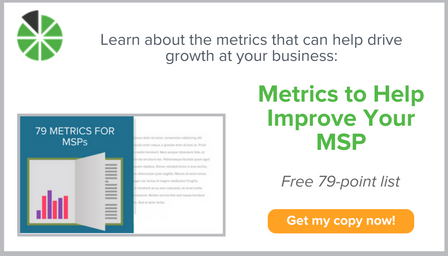Understanding the Difference Between KPIs and Metrics

If you remember back to high school geometry, you might recall the axiom that all squares are parallelograms, but not all parallelograms are squares. Why does this matter? Because, essentially, KPIs and metrics have a similar relationship. All KPIs are metrics, but not all metrics are KPIs.
While the terms are often tossed about interchangeably, failure to understand KPIs vs. metrics might mean you’re focused on the wrong measurement, creating confusion around your goals and impacting decisions the real data may not support. If you’re hoping to base your business decisions on data, then understanding the difference between KPIs and metrics is vital.
Quick Links
- What are KPIs?
- What are metrics?
- KPIs vs metrics: How data driven businesses use both
- How dashboards can help you track KPIs and Metrics
What are KPIs?
KPIs or Key Performance Indicators are the metrics by which you gauge business critical initiatives, objectives, or goals. The operative word in the phrase is “key,” meaning they have special or significant meaning. KPIs act as measurable benchmarks against defined goals.
For example, if your business goal is to increase sales by 15% over the next two quarters, the KPIs to gauge that may include, but not be limited to: new customer acquisition, customer churn, and upselling success rate. In short, a KPI can be made up of multiple metrics.
What are metrics?
While KPIs measure progress toward specific goals, metrics are measurements of overall business health. While they may be loosely tied to specific targeted objectives, they are not the most important metrics and may not be good guides as to whether you’re on track.
In fact, some of them may be what are referred to as vanity metrics, the ones that just make you feel good, but don’t mean much, such as the number of likes a post gets on social media. However, metrics can still provide valuable data about your business.
For example, you might track website visitors as a metric, but unless it’s tied to a specific key business objective, it’s a metric, not a KPI. More on that below!
KPIs vs. metrics: How data driven businesses use both
Why does all of this matter? You may think because you’re not a data analyst metrics and KPIs don’t matter much. But these days, with the way we work and the data-driven nature of many businesses (particularly because we have so many ways to collect data), it’s a mistake to not use the information we readily have at our disposal.
Let’s start with a basic tenet: metrics support KPIs. KPIs may be made up of a variety of different metrics that give you a full picture of you or your team’s progress toward a goal.
If we return to the example of website visitors, simply tracking that information isn’t a KPI — it’s a metric. But if we add a little more information to that example, we can see how it could become a KPI.
If the business goal is to create 20% more sales qualified leads (SQL) over the next year, original/new website visits alone may not provide you with the data you need. However, understanding how that metric translates into other site interactions, like form completions and downloads, is vital. If analysis has created a correlation between downloads and SQLs, then website visitors and new downloads become KPIs rather than just metrics.
Given that example, if new website visitors don’t translate into downloads, if the majority of downloads are coming from an email campaign, then website visits isn’t a KPI; it’s just a metric. That doesn’t mean it’s not important, as visitors might be signing up for your emails via the website, but contacts may come from a wide variety of sources. In short, you will likely still monitor website visits, but it’s not tied directly to an objective as a KPI would be.
How dashboards can help you track KPIs and metrics
For a data driven business, metrics are essential, whether KPIs or not. It’s how your business plans and prepares for next steps, additional goals, as well as identifying lagging performance. While the difference between KPIs and metrics is objective, there is, essentially, no change in how you should be looking at that data. It’s why dashboards can be such an effective tool for businesses.
In fact, BrightGauge’s KPI dashboards empower you to choose the metrics you want to monitor and create customized dashboards. The customization process enables you to check your business’s pulse, at a glance, and share that data with individuals or entire teams, keeping everyone aligned and motivated.
Further, use of the snapshot tool to create charts that measure your progress day-to-day or month-to-month allow you and your team to easily identify patterns among your metrics. That means you can proactively address friction points or build on existing successes. Again, instead of moving between multiple programs, multiple screens, and creating complex spreadsheets, BrightGauge’s tools allow you to do it all in one place, saving you time and effort.
If you’d like to talk to our team about how our dashboard tools can help you monitor business metrics for your data driven efforts, get in touch with us today!
Free MSA Template
Whether you’re planning your first managed services agreement, or you’re ready to overhaul your existing version, we've got you covered!


